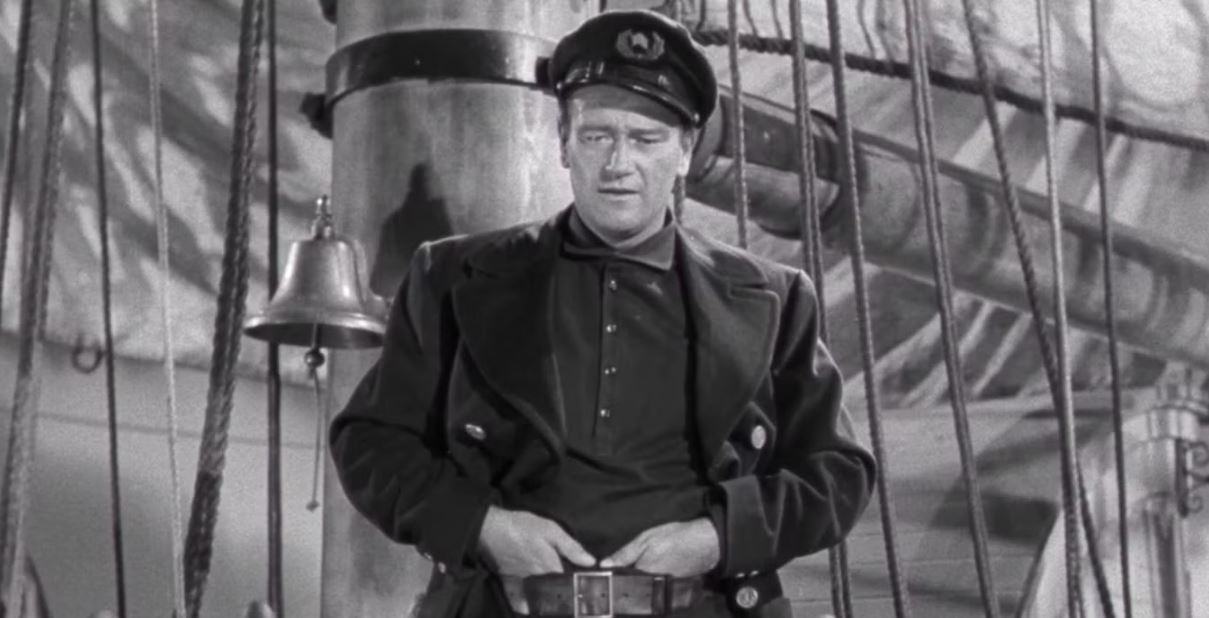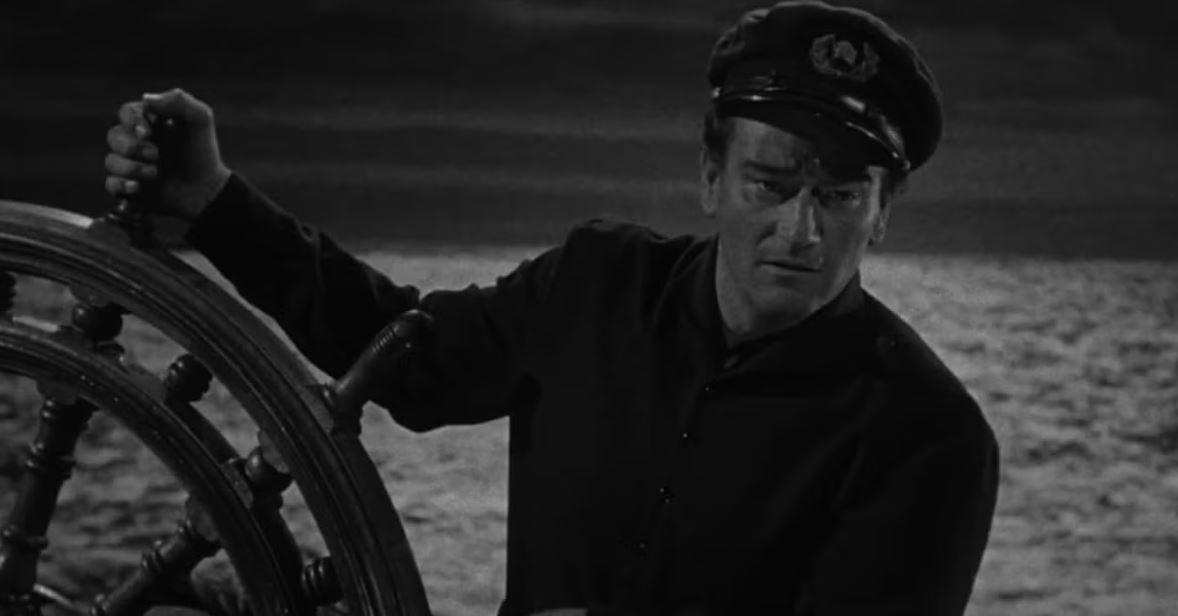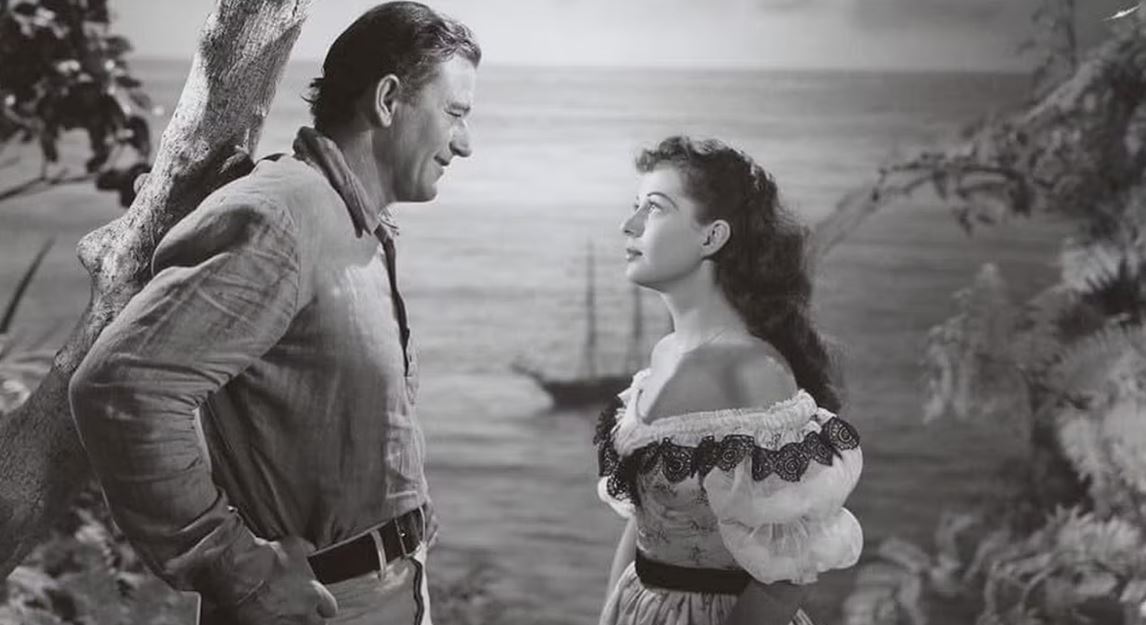While John Wayne was synonymous with stoic heroes of the American West, he was so much more than that. In Edward Ludwig’s 1948 adventure drama Wake of the Red Witch, Wayne takes on a role that offers a rare glimpse into his darker, more complex side. The seafaring adventure has Wayne as Captain Ralls, who seeks revenge as an antihero driven by jealousy, heartbreak, and obsession. It’s an intriguing tale that teems with betrayal and danger, making it one of Wayne’s most villainous roles.
As much a revenge epic as it is an exploration of personal demons, Wake of the Red Witch balances Wayne’s formidable screen presence with themes of love, loss, and loyalty. The film, which became one of Republic Pictures’ most successful productions, is adapted from Garland Roark’s novel of the same name. It is a bold exploration of 1940s cinematic techniques by blending melodrama, supernatural undertones, and practical effects that create a unique visual and narrative experience.
John Wayne Is a Jilted Lover Seeking Revenge in ‘Wake of the Red Witch’

John Wayne’s Captain Ralls is a man consumed by his vendetta against his former employer and shipping magnate, Mayrant Sidneye (Luther Adler), over a woman he loved, Angelique (Gail Russell, who first appeared opposite Wayne in Angel and the Badman). Despite her love for Captain Ralls, Angelique marries Mayrant after Ralls accidentally shoots and kills her wealthy uncle. Wake of the Red Witch can be disorienting in its storytelling, oscillating back and forth between the present and the past to contextualize the conflict between Wayne’s Ralls and Mayrant.
Set in the 1860s East Indies, the film begins with Ralls overseeing two passengers on his ship engaged in a brutal fistfight — a punishment he orchestrated after they initiated a brawl. Ironically, Wayne himself is soon seen fist-punching people for fun and causing chaos whenever he is drunk. Ralls then wrecks and sinks the ship, named “The Red Witch,” with its five million dollars worth of gold, which we learn belongs to Mayrant’s company. Ralls is arraigned in court and charged with willful cargo damage, but Mayrant’s company withdraws the case. The genesis of the conflict between the two men is revisited when they meet. Ludwig’s direction of the screenplay by Harry Brown and Kenneth Gamet utilizes flashbacks to delve into the adventurous story marred by jealousy and vengeance.
Unlike most of Wayne’s characters, Ralls is brooding, morally ambiguous, and deeply flawed. He is obsessed with Angelique, occasionally risking it all by visiting her in her matrimonial home and never really moving on. He daydreams about his haunted past and has taken up drinking as a coping mechanism, which doesn’t help him as it exposes his violent side. But a departure from similar dark figures Wayne embodied in The Searchers and Red River, in Wake of the Red Witch, he is less a rugged hero and more an antihero whose motives seem to be driven more by vengeance for the sake of it than justice. For an actor whose roles often pull in audiences to root for him, as Ralls, Wayne challenges this expectation with a complexity that is equally compelling.
‘Wake of the Red Witch’ Gives Insights Into Bold Artistic Choices of the 1940s Cinema

Wake of the Red Witch is as much an artistic endeavor as it is a narrative one. It embraces new cinematic techniques with experimentation that blends traditional adventure tropes and supernatural elements. One of its most striking aspects is the inclusion of surreal underwater sequences that include a memorable scene involving a giant squid and a wrecked submarine ship. Though modest by today’s standards, these effects were ambitious for their time. The film also explores supernatural elements such as witchcraft, in which characters disappear or face surreal situations.
The movie’s nonlinear storytelling that shifts between the past and the present mirrors Ralls’ fractured psyche and emphasizes his haunted past and his relentless fixation on revenge. Combined with its rich melodrama that is accentuated by an intense score, Wake of the Red Witch is a film that doesn’t shy away from heightening its emotional stakes. Thematically, it intertwines love, betrayal, and retribution and explores the destructive power of unresolved emotions. Angelique’s ghost-like presence throughout the film adds a spectral quality to the film and gives it a haunting appeal.
Wake of the Red Witch may not be the first title that comes to mind when considering John Wayne’s legendary career, but it’s a film that showcases the actor’s range and willingness to take risks. While it lacks the cultural footprint of Wayne’s Westerns, Wake of the Red Witch is evidence of Wayne’s cinematic wings flying beyond America’s Old West.
